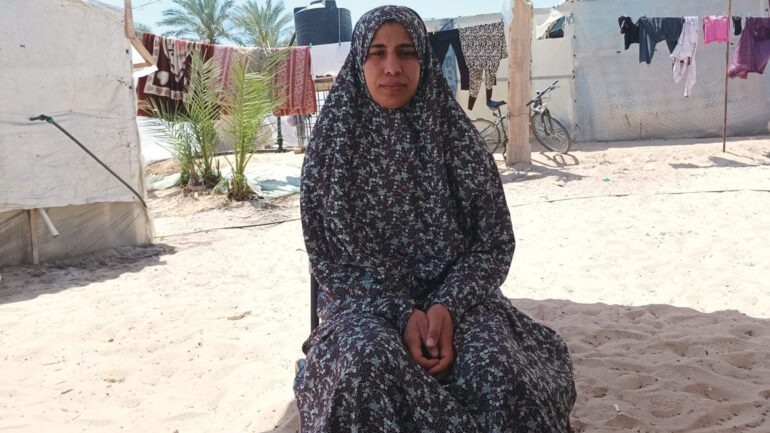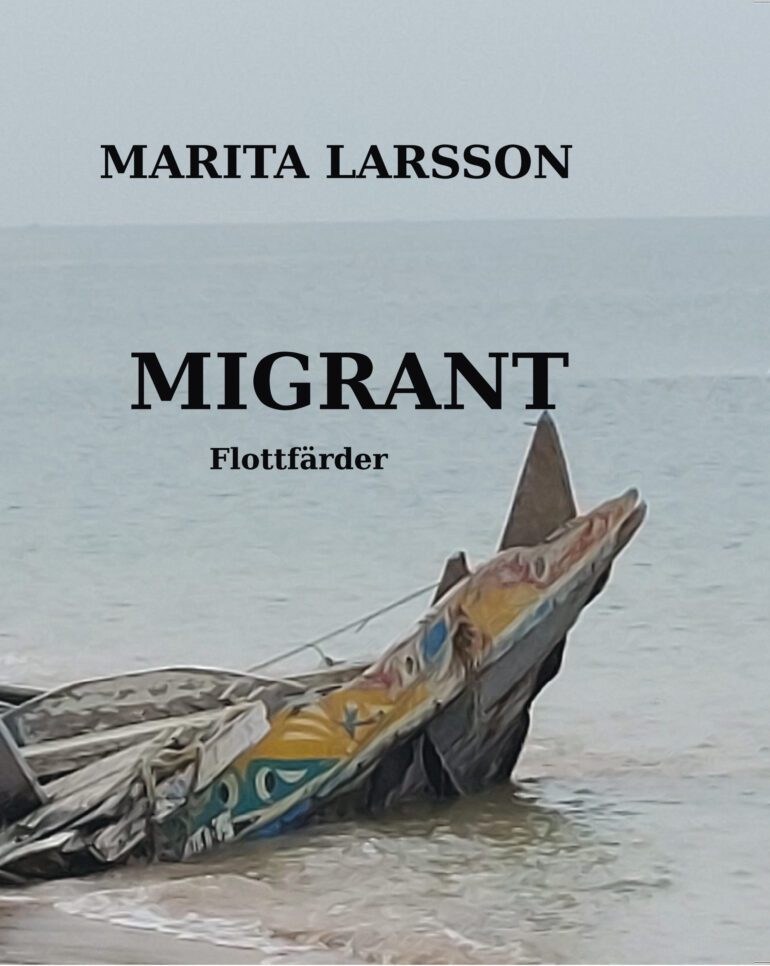Text by Sofia Rönnow Pessah
Translation from Swedish to English by George Farrants
Sofia Rönnow Pessah is an author and human rights lawyer specialising in asylum and EU-law. Among the organisations she has worked for are Swedish Refugee Law Center and Save the Children.
Governments throughout Europe share a feeling of relief now that the EU Pact on Migration and Asylum is finally here. It is now time to take the next step: national implementation. What will the new system really mean for Sweden and Europe? Will children be protected? And can we allow ourselves to feel hopeful as yet another wave of restrictions is set up for people seeking asylum?
Before the parties who make up the Tidö government exposed their passivity towards a party with roots in Nazism, an attempt was made around 2019 to reach a common agreement about changes to migration policy. When reading the parliamentary motions submitted by the various parties, one of which was a 100-page document from the Sweden Democrats (SD), I found clear differences in the language used, the vision presented, and the degree of dehumanisation that the motions would bring. At that time, I breathed a sigh of relief, unaware as I was that the language used by SD would, only a few years later, be adopted essentially without modification into the declaration of intent of the coalition partners.
Reading the section of the Tidö agreement that deals with migration for the first time filled me with fear, but even in my most cynical moments I couldn’t imagine that it would take less than two years for established parliamentary parties to accept collaboration with a party whose election manifesto included racist theories of the great replacement – the same party whose employees operate anonymous social media accounts spreading hate against vulnerable groups under the guise of humour.
Given the current political indifference in the face of human suffering, we must get to grips with and understand the challenges presented by the EU Pact on Migration and Asylum. We must realise that the pact constitutes a compromise between countries that apparently can agree on only a single idea: those seeking asylum can travel to any country except their own.
It might have been possible in another world that a new system for asylum would focus on the fact that the route across the Mediterranean into the EU has been assessed as the most lethal border crossing in the world. Or that it is difficult to promote human rights if the EU collaborates with and provides financing for authoritarian regimes in the region. These considerations, however, were not the factors that stimulated a willingness to cooperate across the EU. Rather, the movement for change started in the EU, as in Sweden, after 2015. The changes are now, nearly ten years later, fully implemented, and the result is a system that focuses more strongly on borders, an increase in punitive measures against those seeking asylum, and fewer guarantees for the rule of law.
As late as 2022, it was possible for the EU to give priority to the needs of vulnerable people and to work together to grant protection for more than 4 million people, far more than the number who sought asylum in 2015. This did not, however, affect the fundamental principles of the Pact on Migration and Asylum: fewer people are to seek asylum in the EU; it must be possible to refuse applications more rapidly; and it must be easier to deport people.
The pact is to be implemented within two years, and each member state is to submit before the end of 2024 a plan of action for how it intends to proceed. So, we need to consider what it really is that will be implemented.
To put it simply: the pact establishes a new system in which every person who enters the EU in an irregular manner will undergo compulsory screening. This will take place in an area that can be considered as a waiting area. During this period, the asylum seeker is assessed as not yet having the right to stay in the EU, even though being already present there. This means in practice that the asylum seeker cannot, as a rule, leave the area.
The concept of an “area” is introduced by means of legal mummery without giving a clear definition. This may be because it is difficult in practice to define the area as anything other than detention. This means that there is a risk the pact automatically puts all asylum seekers who arrive at the EU into detention. Keeping the legal description of area vague enables the system to be introduced through legal procedures in parallel with an article that states that children should not in general be placed in detention at all.
An asylum seeker is to initially remain in this limbo for a maximum of seven days for a registration process in which their data, which are to include fingerprints for all persons older than six years, are collected. As a general rule, compulsion may not be used for the collection of data, but there are exceptions to this rule, as for many other examples relating to the observation of human rights.
The registration is to conclude with an assessment of whether the asylum seeker is to be granted entry to the EU territory and will there undergo a “normal” asylum process. Those who have been assessed as belonging to a group whose members will probably not be granted the right to remain will remain in the limbo area, in order to undergo an accelerated process for a maximum of 12 weeks, including the time taken for age assessment and any appeal process.
The pact also introduces a “solidarity mechanism” in which the states that are assessed to have high “migration pressure” are to receive aid from other member states to deal with the situation. Other states are in this case either to receive asylum seekers from the state that requires aid, or provide support through finance or other resources.
Many aspects of the pact are worthy of criticism, but one of the most frustrating causes of concern is that the system reinforces rather than solves the current problems. This is the case with respect to, for example:
- The idea that the country to which an asylum seeker first arrives will be responsible for the asylum application will, in theory, lead to countries with external borders becoming responsible for most irregular asylum applications. The focus placed by the pact on the process at the border will thus establish even more strongly the idea that a few specific countries will generally be responsible for all those who seek protection in the EU.
- The new processes at the border create the risk that the problems we are currently seeing in countries such as Greece will become more common: people get stuck at the border in bureaucratic limbo, waiting in substandard accommodation. This will bring with it the risk that we gain more restricted insight as a consequence of the reduction in the rule of law and that more people are placed “out of sight, out of mind”.
- The “solidarity mechanism” is claimed to be the core of the new system. It is, however, difficult to see, against the background of currently prevailing rhetoric, which countries will choose to accept asylum seekers rather than paying to remove the requirement for solidarity. A redistribution will not take place in the absence of a will for this from the member states. Countries located at the external border of the EU will retain the incentive to go outside their – literal – borders to keep asylum seekers at a distance. This will lead to continued violence and mortality at EU’s borders.
Who will protect children as EU borders are strengthened?
At first sight, the pact may appear to be positive for children, and several improvements are included that mention children’s best interests. Two examples are a new restriction that a representative for children may normally be responsible for a maximum of 30 unaccompanied minors, and a (slightly) expanded definition of the concept of “family” relating to transfer between countries.
However, and unfortunately, most positive formulations are followed by definitions of exemptions. Based on experience of how things work in the real world, we know that exemptions have a tendency to become the rule when it comes to migration rights, and it remains to be seen how much of the increased protection will truly benefit children.
In particular, the positive formulations cannot compensate for the way in which the new system increases the risk that children are automatically placed in detention, and forces a large number of children to be subject to a border process. When rapid processes are used, there is a greater risk that children fail to be identified, and their special grounds for protection and special needs are not considered.
We know that it is already difficult to ensure that the grounds for asylum for children are investigated, and that it is easy for children’s rights to such resources as healthcare, schooling and play to become deficient in temporary accommodation. While it is true that the pact does not acknowledge that the enclosed areas are legally to be considered as “detention”, the restrictions will be painful reality for children who are compelled to live for months in an enclosed area while waiting for a deportation order.
Thus, it will be necessary for Sweden to introduce border processes as part of the implementation, and those seeking asylum will come to live in restricted areas to a greater extent, without the right to spend time outside of these areas.
With the Tidö government at the helm, it is expected that many of the more extreme parts of the pact will be implemented efficiently. Several Swedish enquiries that are well compatible with the ideas expressed by the pact are already under way. Two examples are a limitation in the right to free legal representation, and the work already started to introduce return centres.
Many proposed laws that will now become reality constitute a heavy blow for us who want people in flight to be met with support, not fences. However, I can for the first time in a long while see in the unavoidable frustration that this development brings a restrained energy as it increases in strength.
In the period following 2015, my lectures for those who care about these issues often brought distress. Many in those rooms were facing – or saw others who were facing – the brutality of bureaucracy, and were on their way to losing faith in the system they had long believed in. The lectures during this period were a mixture of interpretations of new versions of the Upper Secondary School Act and clarification of severe restrictions in legal rights. I often met the pure despair and exhaustion of those who were suffering difficulties or knew someone in this situation. Many people lost a great deal during these years, and civil society, which deserved so much more, lost much of its verve. At times, it seemed impossible to believe that things would change.
But something has happened. Even though the challenges are tougher today, an ardour and sense of commitment have returned to the lectures. In particular, I see an energy in the eyes of people that has been missing for a long time.
Grounds for careful optimism
Many of us were worried about the results of the EU elections. The predicted major advance of right-wing extremist parties was considered to be so likely that it almost felt already true. Even though the election results were as expected in several countries, the changes that occurred were far from the huge displacement of the centre of power in the European Parliament that many had warned about. The result was a reminder that it is important to feel concern, but this should never transition into determinism. It has happened before that hope wins out, and it can (and will) happen again.
The pact will bring serious challenges for us who desire a humane asylum system in Europe, and the fenced “waiting areas” placed throughout Europe will bring the risk that those seeking asylum will end up in a bureaucratic limbo out of sight of the general public.
However, even if the regulations are formulated in the way set out in the pact, the ultimate cruelty of the system can only become reality following an unopposed dehumanisation of the people met by it. People who see, get involved, and publicise what is happening will be needed to counteract the most serious consequences of the pact. This is where you come into the picture.
You are the ones who have been through an asylum process yourselves, or have understood the consequences by seeing the journey of another. You are the ones who will remember and describe what others prefer to forget. You are the ones who recognise the consequences of inhuman migration policies, and the alternatives that humanity can instead create.
You have kept going for many years, or maybe left for a while but even so returned. Every day you demonstrate that harsher migration policies can deny so many people of so much, but can never take from us our humanity. As long as we have this in mind we can hope, and as long as we have hope there is the possibility of change.






